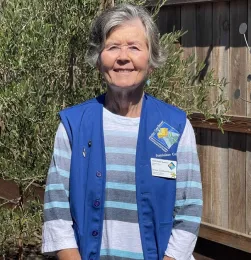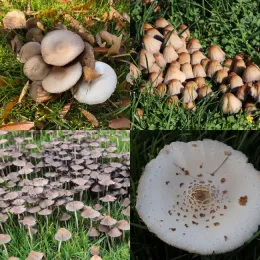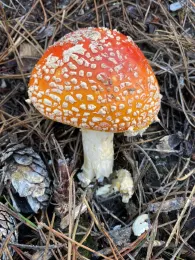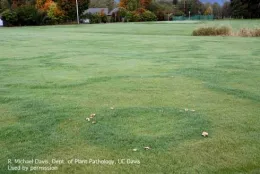Magical Mushrooms

What are Mushrooms?
Mushrooms, also known as toadstools, are the visible reproductive body of a fungus which produces spores. Mushrooms seem to magically appear and then quickly disappear. The fruiting body you see releases its spores to be spread by air currents, with the mushroom then drying up. When spores land in a satisfactory location they will germinate, sending out long filaments called hyphae.

The standard visible morphology of a mushroom is a stipe (stem) topped by a cap with gills on the underside, but mushrooms come in a variety of sizes, shapes, colors and uses. The common mushroom is the cultivated white button mushroom we see in stores. Other shapes include puffball, stinkhorn, morel, bolete, shelf, truffles, bird's nests, orange peel, and agarics. Colors vary from white, black, brown, yellow, and occasionally orange and reds. Sizes range from microscopic to 5 feet in diameter!
Many mushrooms also have an underground filament called mycelium (plural: mycelia). You can sometimes see mycelia when turning over a rotting log or by digging underneath a cluster of mushrooms. The mycelia will look like a stringy mat of white fibers in and around plant and tree roots.

History & Uses
The terms “mushroom” and “toadstool” go back centuries. Much of their mystery is due to their association with poisonings and accidental deaths. They were thought to be special and supernatural by many cultures including Egyptians and Romans who associated them with their rulers and gods. Chinese and Japanese cultures have utilized mushrooms for medicinal purposes for thousands of years. Hallucinogenic mushroom species have a history of use among Indigenous people of Mesoamerica for religious purposes and healing from pre-Columbian times. People today correlate hallucinogenic mushrooms with the hippie period in the 1960s. Edible mushroom species have been found in 13,000-year-old archaeological sites in Chile. Truffles have been collected as far back as 1600 BC.
Edible Mushrooms

Poisonous mushrooms can be very hard to identify in the wild, so unless you have been taught how to classify mushrooms by an expert, it is recommended you buy from a reliable grocery store. Mycologists identify mushrooms by observing their morphology, getting spore prints, microscopic study, and with mushroom keys, though applying DNA technology is becoming common.
You can also grow your own mushrooms at home – kits are available online and at some plant nurseries.
Mushrooms in Your Garden and Lawn

- Common mushrooms in gardens include inky caps, stinkhorns, puffballs, or bird's nests.
- A “fairy ring” of mushrooms is an arc of mushrooms around a circle of darker green lawn, often in shady areas. They get their name from an ancient belief that fairies danced in these circles around the mushrooms.
- Mushrooms in lawns often develop from buried scraps such as pieces of wood or dead tree roots.
- A cluster of honey-colored mushrooms may appear at the base of a tree in the fall. These don't usually appear unless the host tree is dying.
- New lawns require frequent irrigation until established, thus creating a perfect setting for mushrooms, which is why they often appear in freshly planted lawns.
Remember, the mushrooms you see are the fruiting bodies that produce spores. Thus, removing them will not kill the underground mycelia from which they are growing, unless you pick them prior to their release of spores. However, you can try to reduce the number of mushrooms you have by decreasing the amount and frequency of watering your lawn and let the grass dry in between. For more information in dealing with mushrooms in your lawn, visit the UC IPM website at http://ipm.ucanr.edu/PMG/PESTNOTES/pn74100.html
Whether you see mushrooms in the forest, in your lawn or neighborhood, I hope you can appreciate and enjoy these unique, complex, beautiful, valuable, diverse, and magical organisms!
-This article was originally published on December 6, 2021.
Denise Godbout-Avant has been a UCCE Stanislaus County Master Gardener since July 2020.
